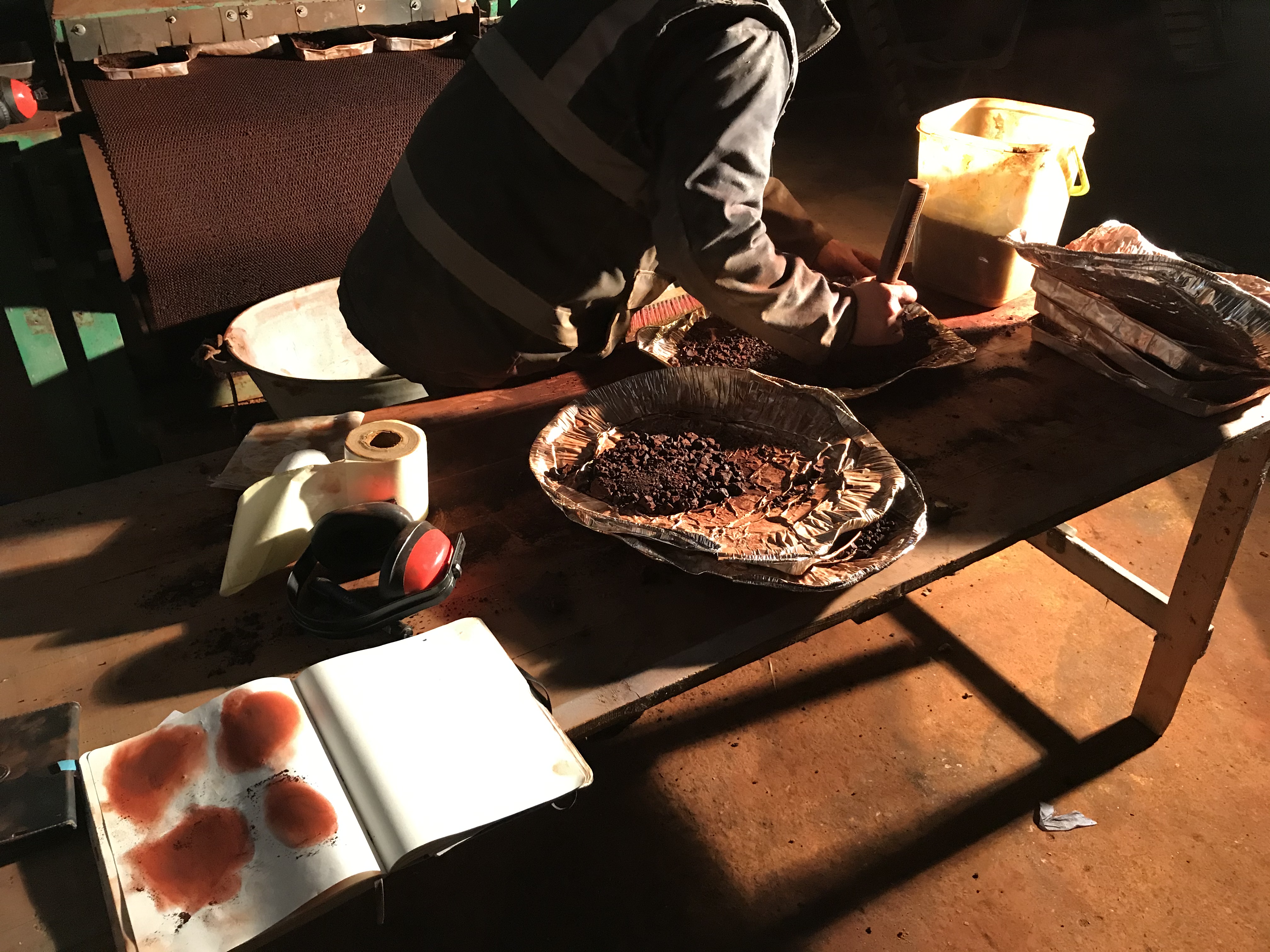Burning Ochre
Burning ochre at between 200 and 600 degrees will cause it to dehydrate, turning the yellow ochre material red. Red is the only colour that remains saturated (and therefore easily visible) in peripheral vision. The transformation from yellow to red, or from high salience to the highest perceptual salience, makes ochre especially suitable as a ritual symbolic material because of its transition from weakness to power. This transformation in the material world simulates the transitions in the immaterial immortal world - red ochre has the power to reverse transformations from life to death - its use in burials symbolises the opposite - from death back to life.
Dried ochre
This supports the possibility that the circumstances of the materials manufacture - its transformative properties - imbue red ochre with meaning, establishing it as a source of magic and cementing powerful relationships between ochre and the human body. Such was the proximity of humans connection to the material world that complex rituals guided powerful transitions from one material state to another and one psychic state to another. It is said in Maori legend that the eating of ochre in the netherworld brings strength and restores life.

Ochre burning and preparation

First batch of burnt ochre, Six Bells, 2019
Does the colour red heighten the symbolic significance of blood, rather than the other way round? Would blood hold the same power if it were grey the argument goes. This suggests the increasing frequency of burials using ochre over time corresponds with a growing capacity for perceptual colour categorisation and shared symbolic experience, and in the later Mousterian or middle Paleolithic period, with the acquisition of language.
Etymologically the relationship between red ochre and blood and between ochre and mothers comes signified in the Greek word haema or haima, as in haematite, which means blood. The relationship has been highlighted between the emphasis in the word haima and the most emphatic form in which basic root MA could be vocalized. The Greek Metra and the Latin Matrix refers to womb which has associations with the earth. It was believed for example that ores grew inside the earth like fruits, which is why many ancient cultures in diverse parts of the world associate the process of iron smelting with sex and reproduction, linking the furnace with the female body, and rituals conducted during the smelting process often involve the sacrifice of blood to the mine and to the earth.
The material’s transformability has played an important role in the evolution of human technologies over hundreds of thousands of years. The various theories relating to the consistent re-appearance of the use of ochre and specifically red ochre range from its visibility - its hue and saturation, to its associations with blood, life and rebirth. The red oxidised iron particles forming as bacteria first learned to harness the sun’s energy 2.8 billion years ago correspond with the earliest forms of life on this planet. Red, and specifically red iron, is a sign of life.


